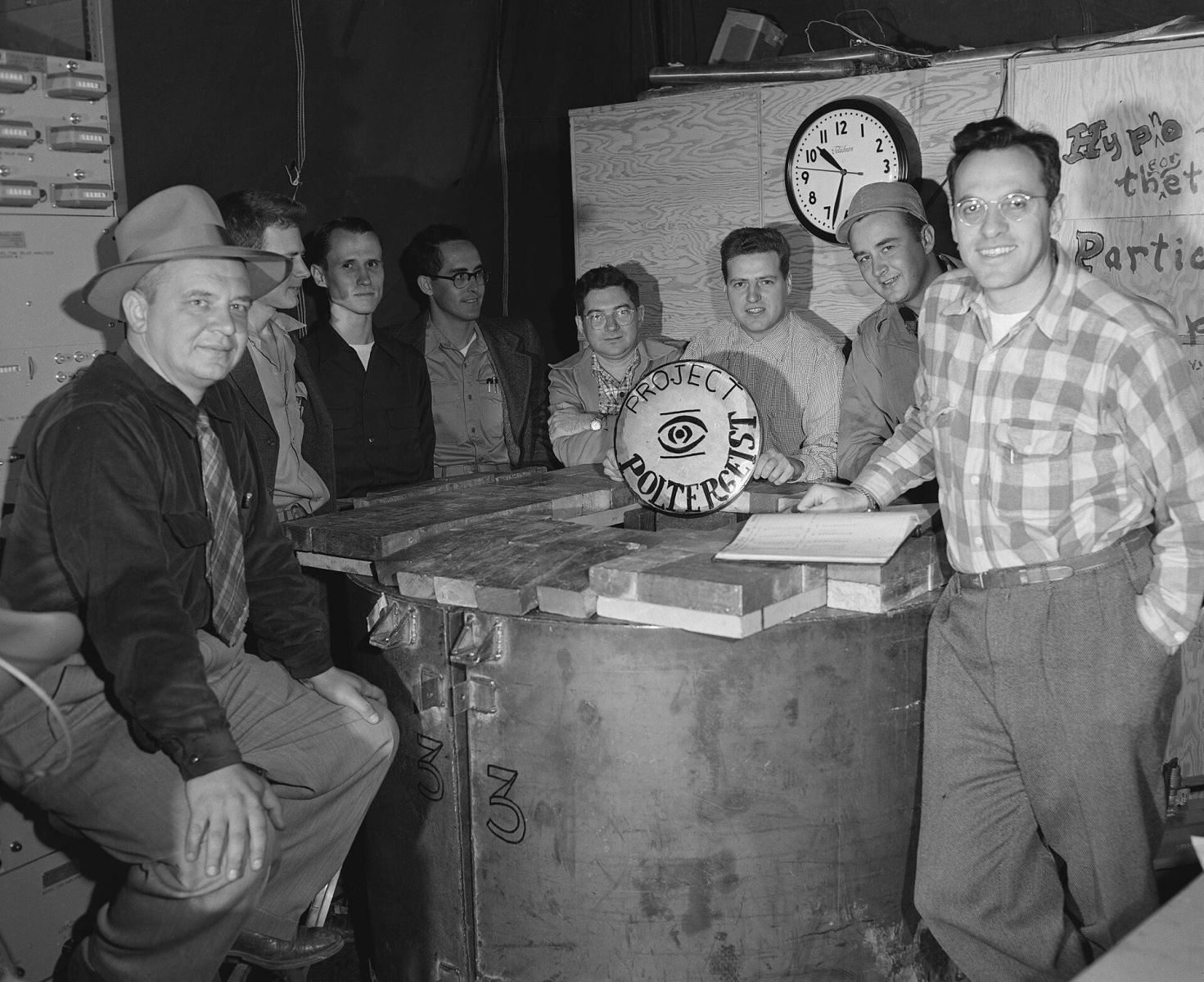Light and electromagnetic waves have always been the main, or perhaps only, medium between us and the universe. They enable us to understand how the universe formed and learn about its substances, allowing us to make interesting discoveries. Over the past decades, scientists have discovered other particles and waves that come from space, including neutrinos and cosmic rays, which have helped scientists better understand the composition of celestial bodies and the physics of the universe.
The Neutrino
The idea of neutrinos, particles that are almost massless, emerged when German physicist Wolfgang Paul tried to explain the energy difference produced when a neutron decays into a proton or vice versa (known as beta decay). He predicted that neutrinos are emitted during beta decay, carrying the remaining energy. The neutrino was indeed detected for the first time in a nuclear reactor experiment in 1956.
 Members of the nuclear reactor project that detected the neutrino in 1956. The photo shows the two physicist in charge of the project: Frederick Reines on the far right and Clyde Cowan on the far left. Photo credit: Los Alamos National Laboratory/wikipedialibrary
Members of the nuclear reactor project that detected the neutrino in 1956. The photo shows the two physicist in charge of the project: Frederick Reines on the far right and Clyde Cowan on the far left. Photo credit: Los Alamos National Laboratory/wikipedialibrary
The neutrino helped scientists understand the reactions that nurture stars, hence, forming the universe. Since they can cause nuclear fission in the largest and most dense objects in the universe, neutrinos play a significant role in the discovery and observation of other fundamental particles, especially the neutrinos responsible for fueling objects internal composition of which we still do not know. An example is neutron stars, which emit a huge number of neutrinos when they collide.
The Big Bang theory suggests that neutrinos had separated from matter at the first second of the universe life. Since they rarely interact with matter, the remnant neutrinos are still found all over the universe. The effect of the remnant neutrinos on the universe has been observed as curvatures and asymmetries in the distribution of the cosmic microwave background. These mark the remnant photons that are spread across the universe since it was 350,000 years old. Intensive studies of these remnants will contribute to our understanding of the early moments of the universe and clear up some of the mysteries surrounding the Big Bang.
Studying these particles and waves does not only help us understand the visible universe, but also try to identify dark matter and dark energy, which does not seem to interact with light or electromagnetic waves. As such, discovering other media that send us messages from space is like opening a new window on the universe. Although it is difficult to observe neutrinos due to the fact that they rarely interact with matter, we are undoubtedly anticipating exciting discoveries as more advanced observation technologies come up.
References
arxiv.org
ddd.uab.cat (pdf)
icecube.wisc.edu
journals.aps.org
neutrinos.fnal.gov
neutrinos.fnal.gov
Cover image: An illustration of two colliding neutron stars Copyright: NASA